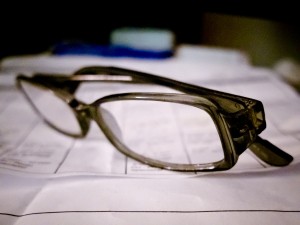
Research demonstrates that carers of people with intellectual disabilities may have poorer health and wellbeing than the general population; for example, McGrother et al (1996) found that carers reported 40% more limiting health conditions than the general population, with depression being especially common.
Physical aggression is a commonly reported challenging behaviour, with 9.8% of the population with intellectual disabilities exhibiting it (Cooper et al, 2009), and may put carers at increased risk of injury.
Some studies have examined violence towards paid carers and support staff working with this population: Strand et al (2004) found that 54% of support workers were exposed to physical harm at least once a year.
Other studies have focussed on family carers, with varying levels of injury reported: Kiernan et al (1997) found that 62% of parents reported experiencing physical injury due to their child’s challenging behaviours – including physical aggression – at some time.
Allen, Hawkins and Cooper (2006) revealed that 24% of parents of children with intellectual disabilities and severe challenging behaviours had been seriously injured as a result of their child’s behaviour.
Physical injury may be an outcome simply of caring, for example through lifting and handling, especially if carers are older or living with limiting health conditions. However, physical aggression may be especially difficult for carers to cope with; in a sample of over 3000 people with intellectual disabilities living in England, Tyrer et al (2006) showed that 14% of adults with intellectual disabilities were described by their carers as being physically aggressive towards others, and of those carers, 42% reported feeling unable to cope, compared with just 10% of carers of individuals with intellectual disabilities without aggressive behaviour.
The literature suggests that injury is a risk for carers of adults with intellectual disabilities and challenging behaviours, however the authors stress that epidemiological information regarding carers’ risk of injury, as well as comparisons to the general population, is lacking.
They, therefore, aimed to explore the incidence, types and causes of injury in family and paid carers of adults with intellectual disabilities in Scotland, hypothesising that carers of adults with intellectual disabilities would be at increased risk of injury compared with the general population due to their caring role, and in particular due to caring for adults who present physical aggression.

This study looked into the incidence, types and causes of injury in family and paid carers of adults with intellectual disabilities in Scotland.
Methods
Interviews were conducted with 511 adults with mild to profound intellectual disabilities and their carers (all of whom were part of a longitudinal cohort in Scotland) to document their experiences of injuries, falls and other accidents over the previous year. 446 carers also provided their experiences of injuries, falls and other accidents through a semi-structured questionnaire.
These data were compared with data collected by the Scottish Health Survey (SHS) 2003 (Scottish Executive, 2005), which collected self-report data on the causes and types of injuries requiring medical treatment experienced in the last year by a representative sample of the Scottish population.
Results
- 9.8% of carers experienced at least one injury requiring medical attention in the previous year. For the SHS cohort in the same geographical region, the incidence of injury from any cause was 12.2%, so there was no significant difference in the amount of injuries experienced by both groups.
- Young and middle aged male carers were less likely to experience injury than the general population, and older male carers were more likely to be injured, but this difference was not statistically significant.
- The opposite was true for female carers: young and middle aged female carers were more likely to experience injury, with older carers being less likely to be injured, but not statistically significantly so.
- Carers did not experience a significantly higher number of injuries than the general population as a result of another person (i.e. from physical aggression). Family carers were significantly more likely to experience falls, trips or slips than paid carers.
- 12.8% of carers reported that they were exposed to challenging behaviours of adults with intellectual disabilities as a result of their caring role. However, physical aggression on the part of adults with intellectual disabilities was not significantly associated with carer injury.
Conclusions
This study found trends towards differences in incidence of injury in carers compared with the general population; however they did not reach statistical significance. This finding indicates that risk of injury as a result of caring for individuals with intellectual disabilities and challenging behaviours are cause for concern, and warrant further research in the future.

The study found trends towards significance in incidence of injury in carers but we need to take more research steps in that direction!
Strengths and limitations
This study benefits from a large sample size and a directly comparable general population sample. However, as the authors note, the data was self-reported, and therefore subject to recall. It is also noteworthy that, especially in the case of family carers, experiencing an injury as a result of a relative for whom they are caring might be a sensitive issue, which could lead to carers downplaying and subsequently under-reporting injuries.
While challenging behaviours and physical aggression are intuitively important contributors to injury in carers, this study did not find a significant association between carer injury and presence of physical aggression in the person for whom they were caring. Further, given the huge disparity in prevalence and extent of challenging behaviours in adults with intellectual disabilities, it is perhaps unhelpful to categorise people specifically in this way, as it may contribute to experiences of stigma and perpetuate negative behaviours.
While the difference between injuries in carers compared to the general population found here were not significant, the authors report that there were trends towards significance. As such, this study calls attention to the fact that this is an area requiring further research.
For instance, the higher incidence of accidents such as trips or slips among family carers found by these authors might be due to a lack of professional training in family versus paid carers, which warrants further exploration.
Accidents and injuries experienced by carers, whether paid or unpaid, might have a hugely detrimental impact on their lives as a whole, for example in limiting their ability to work or to care for other dependents.
Furthermore, this issue affects not only the safety and wellbeing of carers, but of those for whom they care. This paper offers important insights and calls attention to the scope for future work in an area that is of crucial importance.

Given the disparity in challenging behaviours, it is unhelpful to categorise adults in this way, as it may perpetuate stigma and negative behaviours.
Links
Primary paper
Finlayson, J., Jackson, A., Mantry, D., Morrison, J. and Cooper, S.-A. (2015), Types and Causes of Injuries of Carers of Adults With Intellectual Disabilities: Observational Study. Journal of Policy and Practice in Intellectual Disabilities, 12: 181–189. doi: 10.1111/jppi.12109 [Abstract]
Other references
Allen, D., Hawkins, S. and Cooper, V. (2006), Parents’ Use of Physical Interventions in the Management of Their Children’s Severe Challenging Behaviour. Journal of Applied Research in Intellectual Disabilities, 19: 356–363. doi: 10.1111/j.1468-3148.2006.00292.x [Abstract]
Cooper, S-A., Smiley, E., Jackson, A., Finlayson, A., Allan, L. et al (2009) Adults with intellectual disabilities: Prevalence, incidence and remission of aggressive behaviours and related factors. Journal of Intellectual Disability Research 45 439-449 [Abstract]
Kiernan, C., Alborz, A., Mason, H., Swarbrick, R., Mason, L., Reeves, D., Emerson. E. (1997) The HARC challenging behaviour project report 4: Experiences and views of parents caring for people with learning disabilities living in the family home. Manchester, UK: The University of Manchester
McGrother, C.W., Hauck, A., Bhaumik, S., Thorp, C., Taub, N. (1996) Community care for adults with learning disability and their carers: Needs and outcomes from the Leicestershire register. Journal of Intellectual Disability Research 40 183-190 [Abstract]
Strand, M-L., Benzein, E., Saveman, B-I. (2004) Violence in the care of adult persons with intellectual disabilities. Journal of Clinical Nursing 13 506-514 [Abstract]
Tyrer, F. McGrother, C., W., Thorp, C., F., Donaldson, M., Bhaumik, S., Watson, J.M., Hollin, C. (2006) Physical aggression towards others in adults with learning disabilities: Prevalence and associated factors. Journal of Intellectual Disability Research 50 295-304 [Abstract]

Challenging behaviours in adults linked to injury in their carers? https://t.co/J5MnU520iN
A research study review – Challenging behaviours in adults linked to injury in their carers? https://t.co/b2Wi2ZUAVO
[…] 1Challenging behaviours in adults linked to injury in their carers? […]
What do you do if resident hurt by another resident in challenging behaviour.